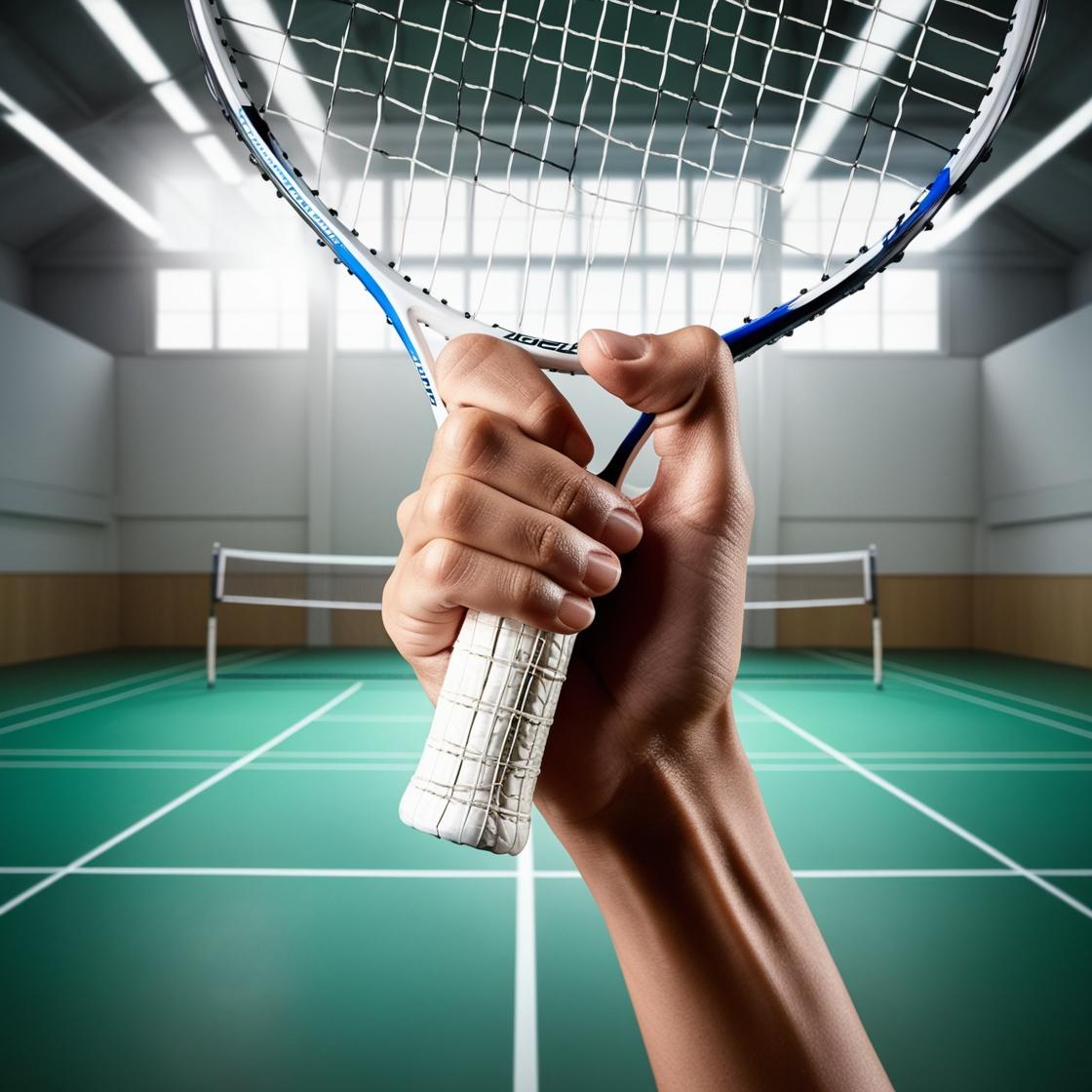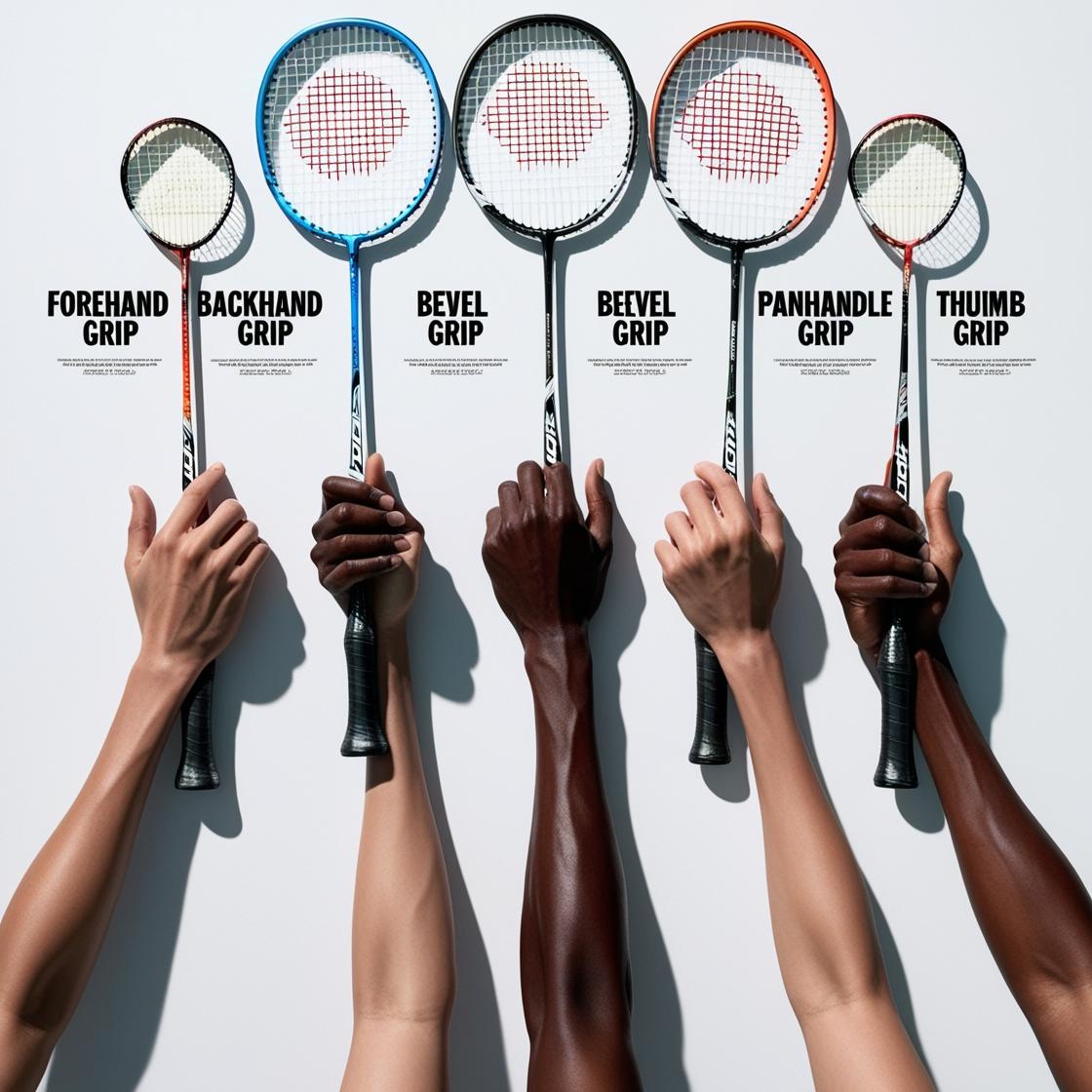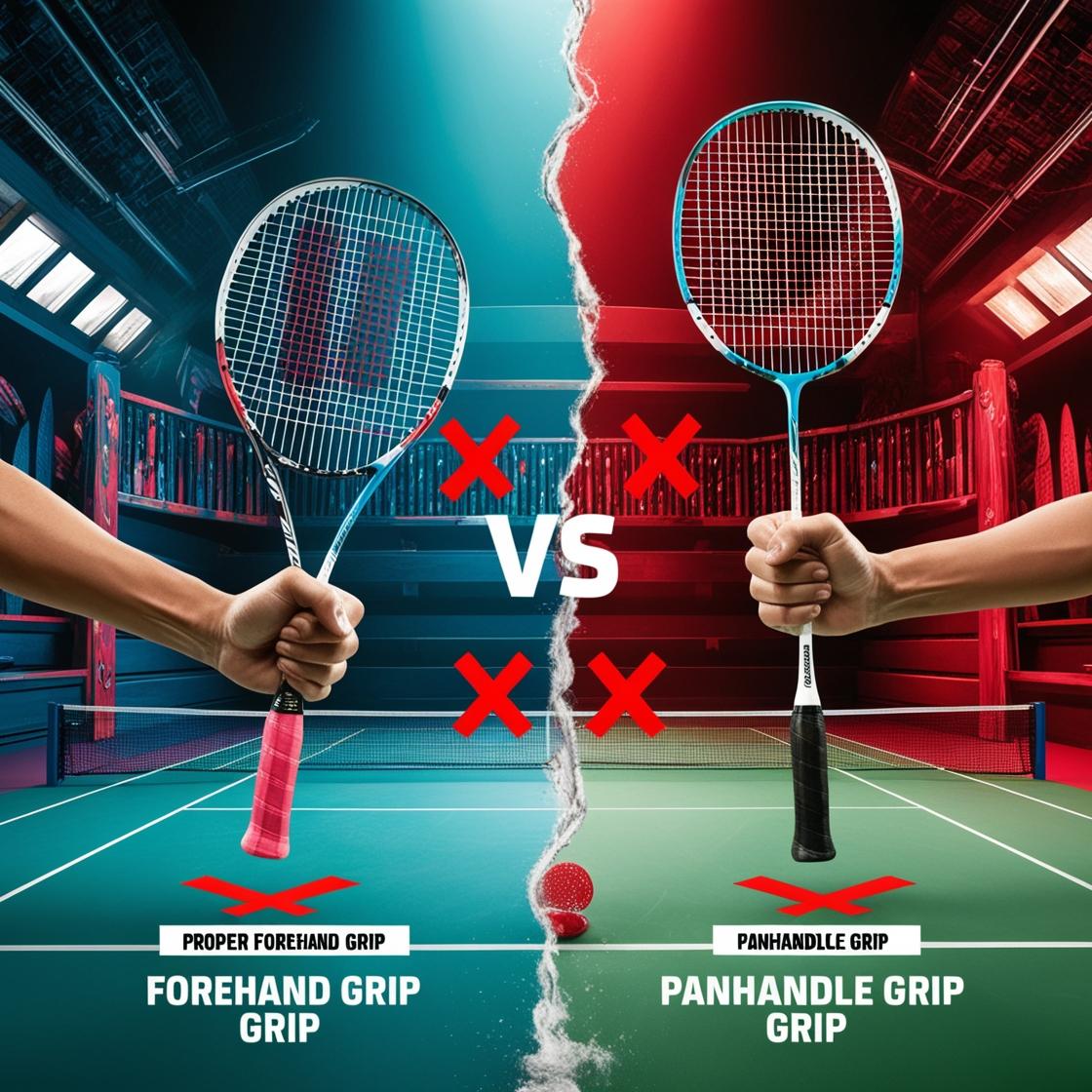Badminton grip defines control, accuracy, and power. A proper way to hold the racket helps players execute smashes, net shots, and clears effectively. This guide explains how to hold a badminton racket correctly, using proven grip techniques for beginners and intermediates.
What Is the Proper Way to Hold a Badminton Racket?
To hold a badminton racket properly, use a relaxed handshake grip with the V-shape between your thumb and index finger aligned with the racket’s bevel. This allows control, flexibility, and power transfer.
Key Attributes of a Proper Badminton Grip:
-
Relaxed fingers: Reduces tension and increases control.
-
Thumb placement: Supports backhand shots.
-
Index finger: Guides racket face direction.
-
Grip pressure: Moderate for maneuverability and reduced strain.
Correct grip prevents injuries and supports both forehand and backhand techniques.
Why Is Holding the Racket Correctly Important in Badminton?
Correct grip maximizes shot accuracy, reduces wrist strain, and improves stroke efficiency. Incorrect grip leads to mis-hits, inconsistent smashes, and shoulder injuries.
| Grip Quality | Resulting Performance | Injury Risk |
|---|---|---|
| Proper Grip | Increased power, accuracy | Low |
| Too Tight Grip | Limited flexibility | High (tendonitis) |
| Wrong Angle | Poor shuttle direction | Medium |
What Are the Main Types of Badminton Grips?
Each grip serves a different purpose in gameplay.
1. Forehand Grip
-
Use: Smashes, clears, drives
-
How: Hold like a handshake. The “V” between thumb and index finger points to the side bevel.
-
Tip: Keep the palm relaxed to rotate the wrist freely.
2. Backhand Grip
-
Use: Drives, pushes, net lifts on non-dominant side
-
How: Slide thumb onto the wider bevel. Shift grip slightly counterclockwise (for right-handers).
-
Tip: Don’t over-rotate the wrist—use thumb pressure instead.
3. Bevel Grip
-
Use: Backhand clears, drop shots
-
How: A hybrid of forehand and backhand grips.
-
Tip: Best for transitioning quickly during rallies.
4. Panhandle Grip
-
Use: Net kills, drives, awkward returns
-
How: Hold the racket as if holding a frying pan.
-
Tip: Avoid overusing—it limits wrist flexibility.
5. Thumb Grip
-
Use: Push shots, blocks at the net
-
How: Press the thumb flat against the back bevel.
-
Tip: Ideal for doubles defense or quick exchanges.
How Do You Switch Between Grips Quickly?
Use finger power instead of wrist turning. Rotate the racket gently using your thumb and index finger while maintaining racket balance.
Grip Switching Technique:
-
Keep fingers loose.
-
Identify transition points (e.g. net shot → lift).
-
Practice drills with multi-shuttle to train transitions.
What Are Common Mistakes in Holding a Badminton Racket?
Avoid these common grip errors that affect performance:
-
Gripping too tightly: Limits wrist action and reduces shot variety.
-
Using only palm strength: Reduces control and causes fatigue.
-
Incorrect thumb placement: Weakens backhand control.
-
Using panhandle grip too often: Limits angles and reach.
How to Hold the Racket for Different Badminton Shots?
| Shot Type | Recommended Grip | Key Positioning |
|---|---|---|
| Smash | Forehand Grip | Tighten just before impact |
| Net Shot | Thumb Grip | Keep wrist neutral and guide with fingers |
| Drive | Panhandle or Thumb | Quick wrist flick, fingers lead motion |
| Clear | Forehand/Bevel | Relaxed arm rotation from shoulder |
| Drop | Forehand/Bevel | Use finger control, minimal force |
| Backhand Clear | Bevel Grip | Snap wrist with thumb push |
What Tools Help Learn the Right Grip?
Use tools and methods that help reinforce grip memory.
-
Overgrip tape: Indicates proper finger positioning.
-
Mirror drills: Check finger placement visually.
-
Shadow training: Practice grip transitions without a shuttle.
-
Grip trainers: Help improve grip strength and control.
FAQ
Q: How to hold the racket in badminton for beginners?
A: Use a forehand grip. Imagine shaking hands with the racket handle. Keep fingers relaxed and the “V” of the hand aligned with the side bevel.
Q: How to hold a badminton racket properly during a serve?
A: Use the forehand grip for high serve and thumb grip for backhand serve. Align the racket face with shuttle direction and hold lightly.
Q: Is grip pressure important?
A: Yes. Hold the racket with 30–40% pressure. Tighten only during shot execution.



